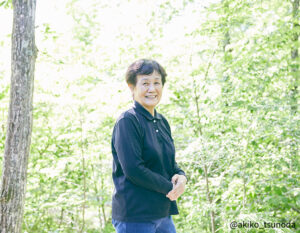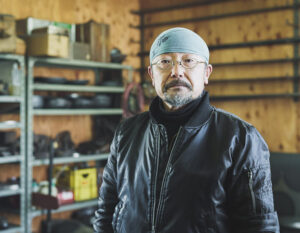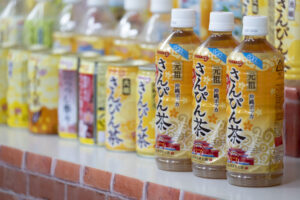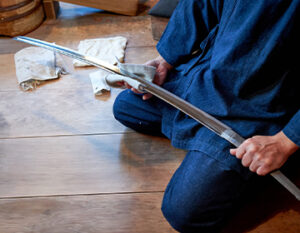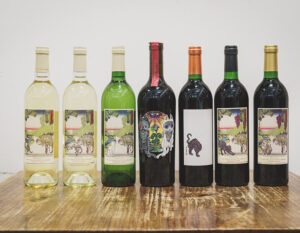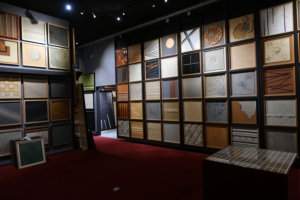Art Village Created in an Environment Rich in Nature
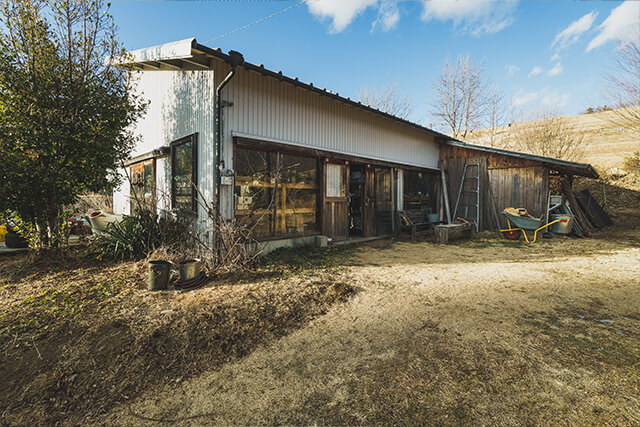
Nakagawa Village in Kamiina-gun, Nagano Prefecture, overlooking the Japanese Alps. It is a village rich in nature with a pristine landscape that has been called the most beautiful village in Japan. However, it is not widely known that Nakagawa Village also has another aspect as an art village. Various artists, including painters, woodworkers, art framers, and glassworkers, live and have their studios here. In addition to the government’s active promotion of the affinity with art, such as by introducing artists’ activities, the rich natural environment may have stimulated creativity, resulting in the establishment of a culture in which the community and art coexist. The activities of a diverse range of artists also motivate people who are considering moving to the area from a cultural perspective, such as art and production, and this has directly led to an increase in the number of young people moving to the area.
Roots in glass as hippie artwork
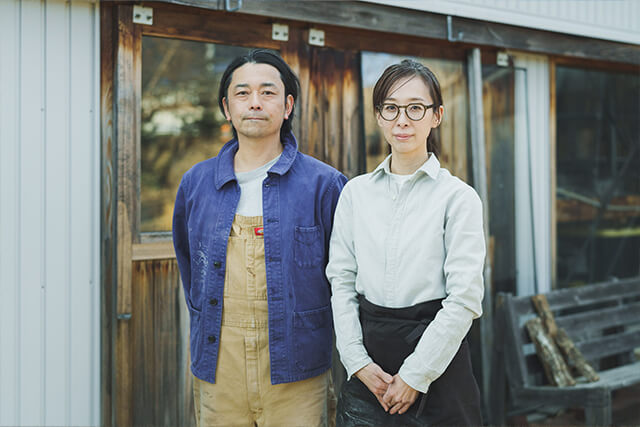
Mr. and Mrs. Taira, who have “STUDIO PREPA,” a studio that makes tableware, vases, and other household items using air-blown glass, are another couple who fell in love with the atmosphere of Nakagawa Village and moved to the area. The scenery, which changes its expression at sunrise, sunset, and different times of the day, is extremely beautiful. They decided to move to the area because they felt at home in such an original landscape. However, contrary to the scenery, when you step into the workshop, it looks like an American garage with piles of American-made daily necessities.
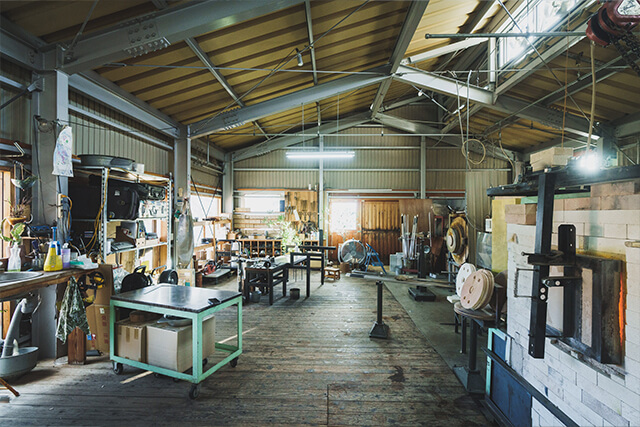
That is as it should be. The roots of the Taira couple’s work lie in the hippie culture of the 1970s. The glass works of Mr. and Mrs. Taira, which follow the technique of air-blowing that was popularized as hippie artwork, have a warmth and stylish outline that is distinctly different from the old Japanese-made glass. In addition to being handled mainly by major select stores such as Ron Herman and Margaret Howell, they have received many inquiries from popular restaurants in Japan and abroad. They also participate in craft fairs in the U.S. so as not to neglect their studies to update their ideal style. Based in Yosemite National Park, they stay there for several weeks, sometimes more than a month, to experience the local atmosphere firsthand, which leads to inspiration for their work.
Home Decor in the U.S.A.
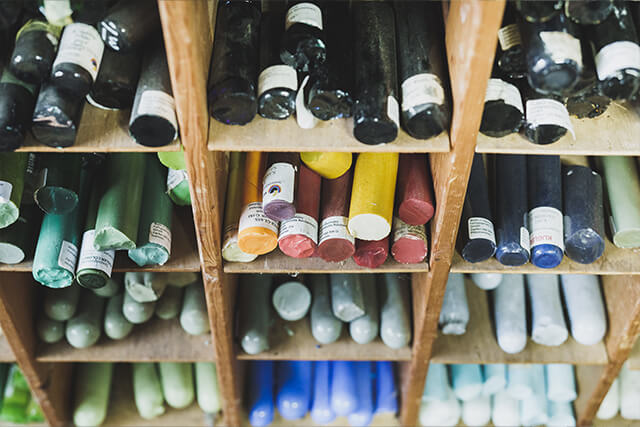
Did you know that the U.S. is a leader in glass crafts? From windows and cups to smartphones, glassware is so much a part of people’s lives that it would be difficult to live without touching it. In Japan, there are traditional glass crafts such as faceted glass and beadlocks, and if you look around the world, you will find that glassware is widely used in all regions, from traditional crafts such as Venetian glass and Turkish lamps to famous glassworks such as Galle, Baccarat, and Swarovski. Although the United States does not seem to be a leader in glassware, it is the leader in the field of home décor, he says.
Aiming for warmth expressed through glass
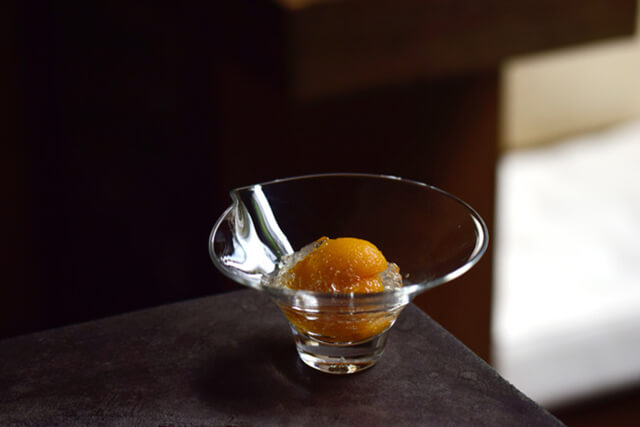
Home décor refers to tableware, vases for arranging flowers, and other products that add color to daily life. The Taira’s workshop also makes tableware and glassware, as well as vases, lampshades, and other glassware designed for use in daily life. The glassware made by Mr. and Mrs. Taira is particular about its thickness. They once received a wooden glass from a friend, and when they drank water from it, they were astonished at how delicious it tasted. She then tried drinking water from a glass cup she had around her in the same way. However, the water was somewhat spiky. I wondered why, since the water came from the same faucet, but the cause seemed to be the shape of the drinking cup. The thin, dignified glass was beautiful to look at, but it did not make the usual drink taste even better, like a wooden cup. After realizing this, I began to think that I wanted to make glassware that expressed the warmth of wood.
Completed when it is filled, that is our policy.
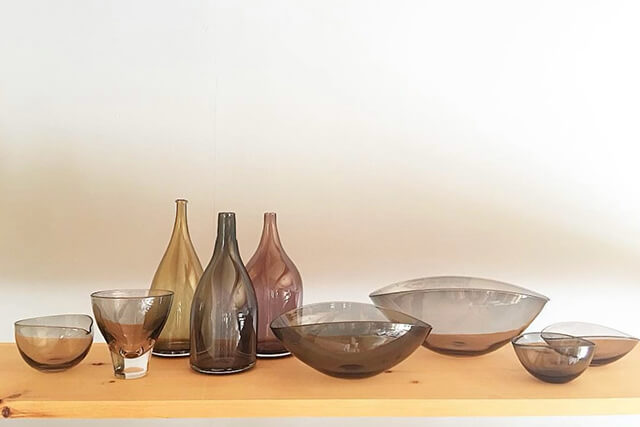
The products made based on this policy are completed when the contents are added. The glassware must be at least 20% empty when it is just a container, otherwise it will be too hot when the contents are added, whether water or flowers,” says Mr. and Mrs. Taira. Mr. and Mrs. Taira.
Since the dishes are used in daily life, they are not meaningful only as vessels. They believe that glassware that brings out the best of the materials is what they should make.
Another thing that Mr. and Mrs. Taira are committed to is to stick to a style that can only be achieved by air-blowing, and to products that can only be made by air-blowing. They sometimes use cold work such as mosaic or fusing to express colors (cold work is made of hardened glass, as opposed to hot work made of molten hot glass such as air-blown glass), but they do this only to add value to their creativity, and they do not stray far from that category. I try not to stray too far from that category. Although we have been doing nothing but air-blowing for nearly 20 years now, there is still a lot that we don’t know about manufacturing and its characteristics. But that is what makes it interesting for them, according to Mr. and Mrs. Taira. The world of glass is so deep that even the two of them, whose products are recognized for their excellence not only in Japan but also around the world, have not yet fully grasped it. The inquisitive minds of Mr. and Mrs. Taira, who want to learn all they can about this world, will continue to produce even more wonderful products.




